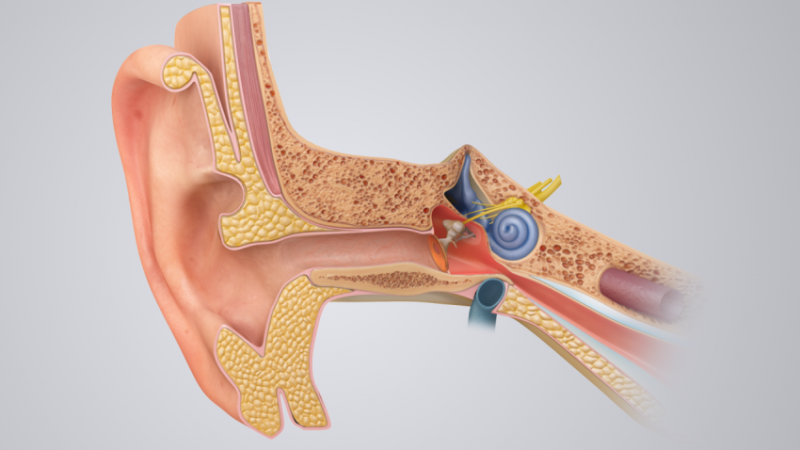ENTs: Now’s the time to raise awareness about common ear conditions and injuries
Summer doesn’t technically end until September 22 this year, so there’s still plenty of time for warm-weather fun. However, that also means more opportunities for ear health issues, from swimmer’s ear to eardrum injuries. Misinformation persists about common ear ailments and treatments, and not enough patients understand the importance of proper ear protection and ear hygiene. ENTs: are you educating your patients on how to keep their ears healthy? These videos can help.
Swimmer’s Ear
If a patient experiences an earache, an ear that’s painful to the touch, and/or a feeling that their ear is blocked, it could be swimmer’s ear (acute otitis externa). This is especially true if the patient spends a lot of time in the water—thus the name. This painful condition affecting the outer ear is caused by inflammation or infection when water gets trapped in the ear and bacteria grows. Notes the American Academy of Otolaryngology–Head and Neck Surgery (AAO-HNS), “Swimmer’s ear often affects children and teenagers, but can also affect those with eczema or excess earwax.”
This video gives patients a brief overview of the condition:
You may consider posting the video on your practice’s website or social media pages, or including it in an email newsletter. Let patients know that if left untreated, complications may include temporary hearing loss, recurring ear infections, and bone and cartilage damage if ear infections spread to the base of the skull, brain, or cranial nerves, according to AAO-HNS. “Diabetics and older adults are at higher risk for such dangerous complications.”
AAO-HNS offers these tips for patients:
- Keep ears dry and free from moisture. Consider wearing earplugs when swimming, and dry the ears with a hair dryer or towel afterwards.
- Do not use cotton swabs to remove earwax. They may remove the protective layer of earwax inside the ear and irritate the thin skin of the ear canal, creating an ideal environment for infection.
- Have your ears cleaned periodically by an otolaryngologist if you have itchy, flaky, or scaly ears, or extensive earwax
Ear Infections
These are so common in children that by the age of five, nearly every child has experienced at least one ear infection (acute otitis media). Most parents know how painful ear infections can be for children. Adults can also get ear infections, however. Symptoms in adults may include ear pain, drainage of fluid from the ear, and diminished hearing, according to Mayo Clinic. Caused by a bacterial or viral infection in the middle ear, an ear infection often results from a cold, flu, or allergy that causes congestion and swelling of the nasal passages, throat, and eustachian tubes.
While ear infections often clear up on their own, let patients know that it’s important to see a doctor to get an accurate diagnosis and proper treatment. In children, chronic ear infections can cause complications such as hearing loss, behavioral problems, and speech problems.
This video explains treatment options to patients:
Also let patients know that you won’t necessarily give them a prescription for antibiotics for every ear infection. Antibiotic resistance poses a real danger, so it’s important that these medicines are only used when necessary and effective, stated the U.K.-based National Institute for Health and Care Excellence (NICE) last year. “The evidence shows antibiotics are not needed by most children and young people with middle ear infections,” reported NICE. According to their guidelines, antibiotics should be considered in some cases, including when symptoms don’t improve after three days or when a burst eardrum leads to a discharge of fluid.
Eardrum Injuries
If any of your patients are scuba divers, they may be all too familiar with the pain and discomfort of barotrauma to the ear. After all, ear injuries resulting from pressure are the most common diving injury. ENTs know that a burst or ruptured eardrum (perforated tympanic membrane) can also be caused by a change in pressure from flying on an airplane or driving in the mountains, a very loud noise close to the ear (such as fireworks), or from inserting objects, including cotton swabs, into the ear.
This video shows patients exactly where the eardrum is and what a perforated eardrum looks like:
While a ruptured eardrum may heal within a few weeks without treatment, it’s important to let patients know that untreated eardrum injuries can cause hearing problems and lead to infection, pain, and ear drainage.
Explain that only a doctor can determine whether ear drops or antibiotics are necessary and the best course of treatment, and that if the eardrum does not heal within two months, an ENT may need to perform a myringoplasty to repair or patch the hole.
Patient education is key for eardrum injuries. Cleveland Clinic advises telling patients to:
- Keep the injured ear dry and to avoid swimming.
- Cover the ear during a bath or shower.
- When blowing your nose, do not be too forceful.
- Protect the ear from any contact with cold air.
For more information on patient education for your ENT practice, get in touch with us today!


